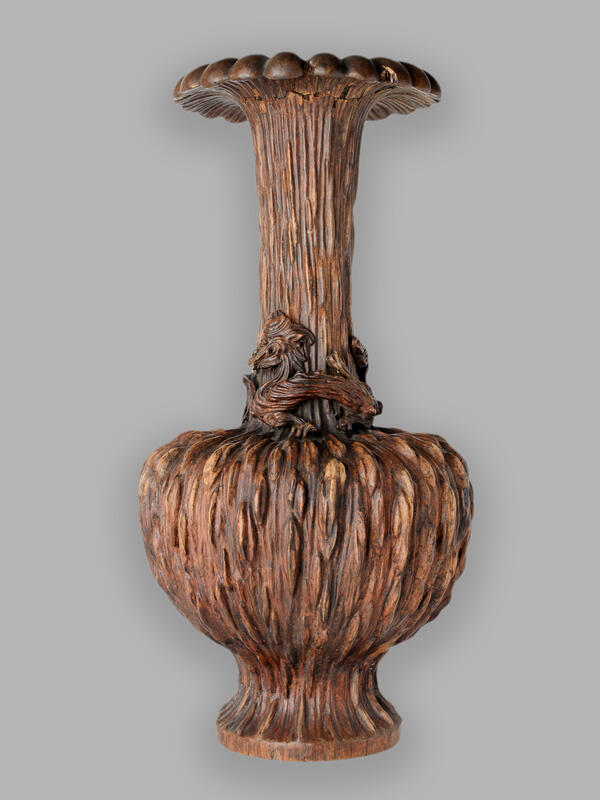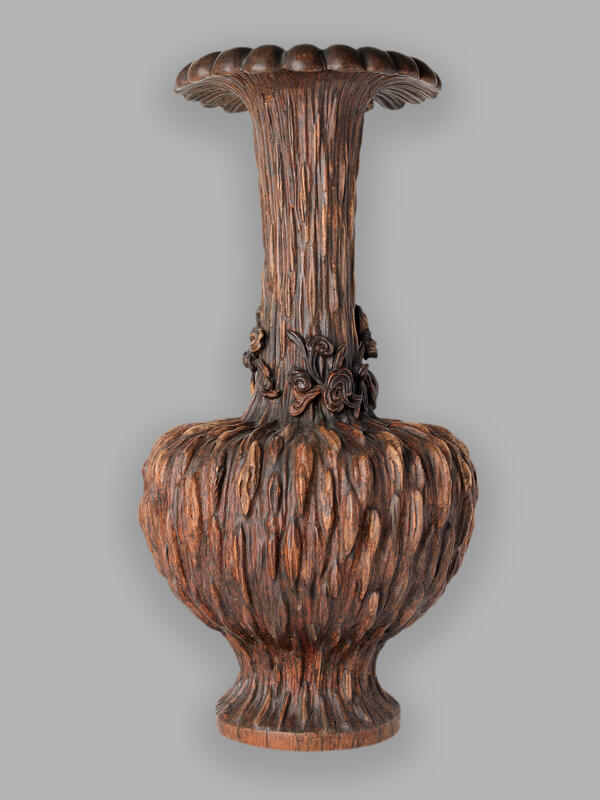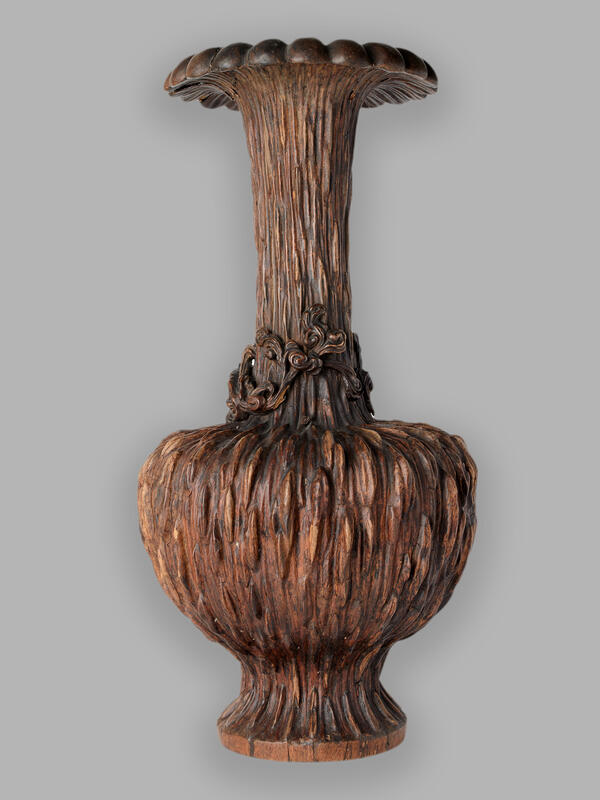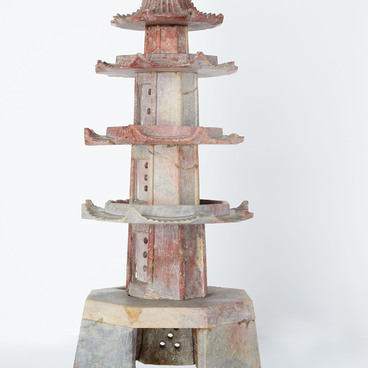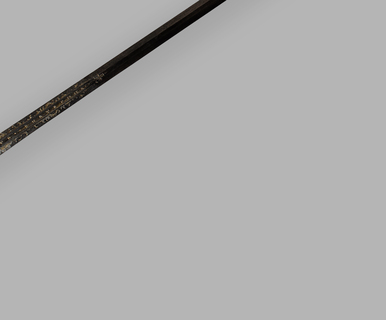Chinese wood carving originated in the 7th century, during the early period of the Tang dynasty. It is believed that the first workshops appeared in the Dongyang region. During the Song dynasty, woodcarving developed into a form of art, while the Ming and Qing dynasties are considered the heyday of woodcarving.
This decorative vase made of mountain birch root has a spherical shape with a tall neck designed to look like an open flower. The vase flares where the neck meets the body. The relief body tapers at the bottom.
This work of applied art is decorated using a stylized pattern. The vase is an artwork designed by an unknown Chinese craftsman. It shows the artist’s fine sense of the natural material, exquisite taste, and attention to detail.
A dragon is coiled around the vase’s neck, playing with a pearl and breathing air in the shape of the lingzhi mushroom which is a motif characteristic of the 18th century, the period of the Qing dynasty.
The image of a dragon plays an important role in Chinese culture. The dragon is a legendary mythical creature that symbolizes kindness, peace, and prosperity. In ancient times, the dragon was considered a symbol of the Emperor of China and his imperial power.
The rulers of all dynasties considered themselves Sons of Heaven, true descendants of the dragon. According to Chinese mythology, there were also pearls that possessed astonishing magical powers. One such pearl was depicted by the craftsman on this vase.
The pearls were incredibly large and shiny. They belonged to dragons who guarded treasures. Dragons kept pearls in their cheek pouches or in folds of skin under their chin. Dragon pearls were valuable because they granted power and health to their owner. By touching anything with a pearl, a dragon could make it grow and multiply.
This unique vase was
donated to the Kyakhta Museum of Local Lore by the State Hermitage Museum in
1937. It was made from a solid piece of root.

